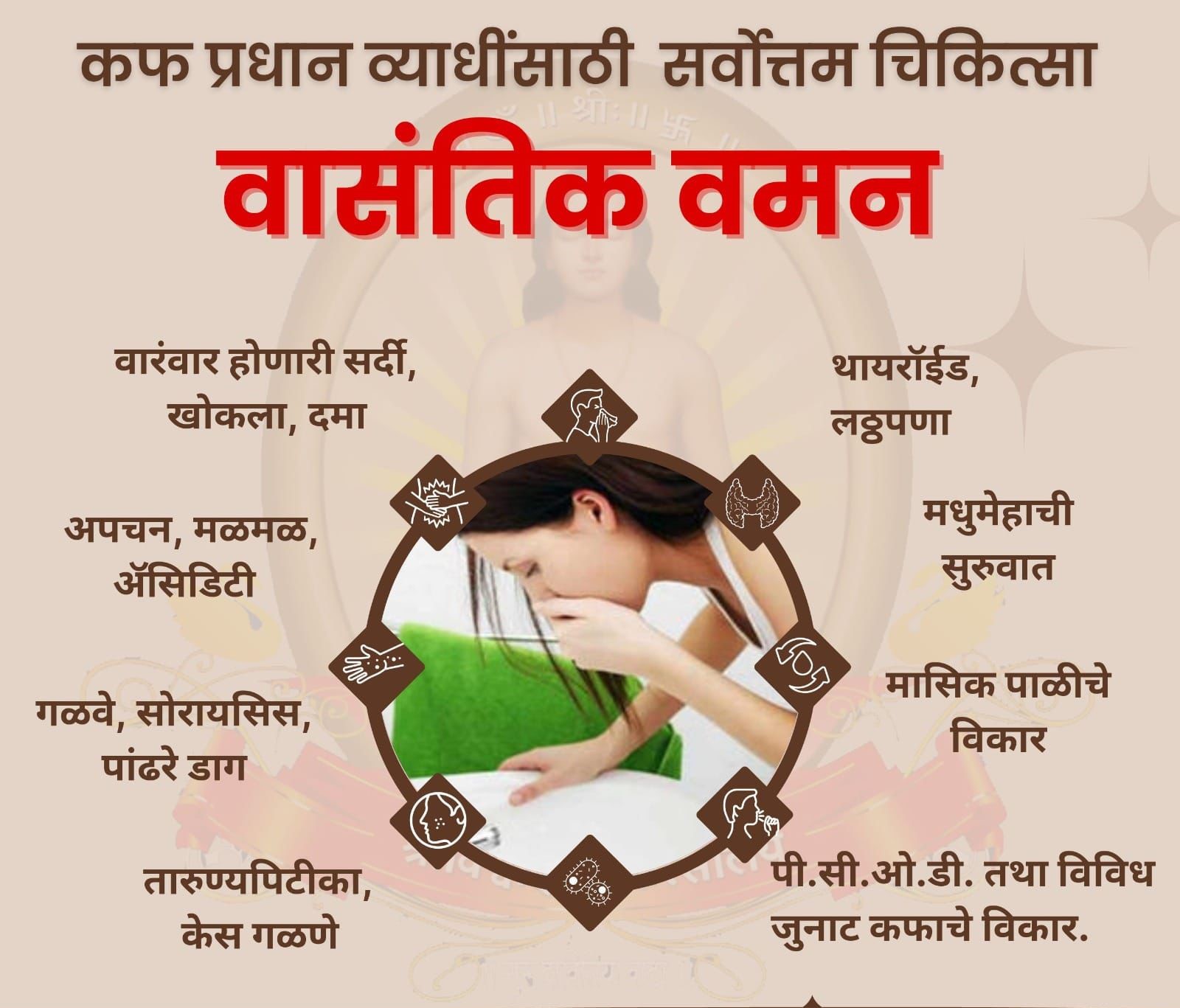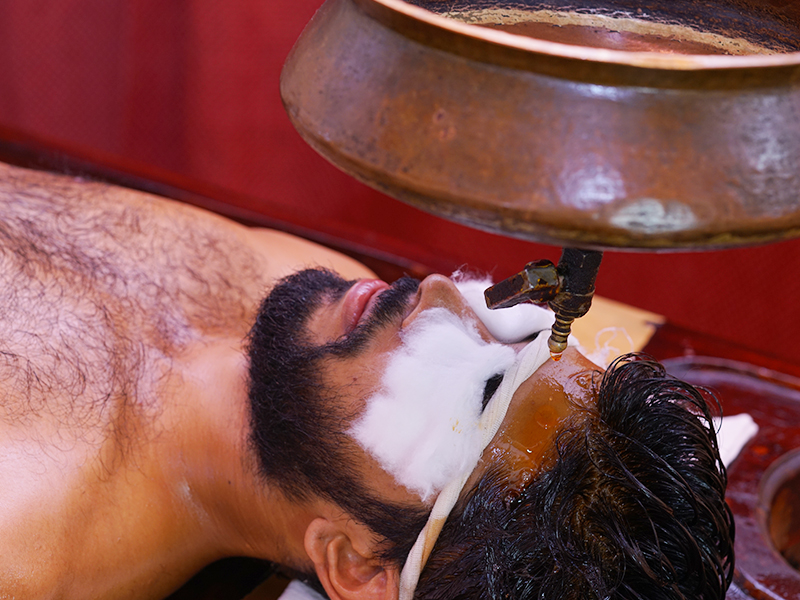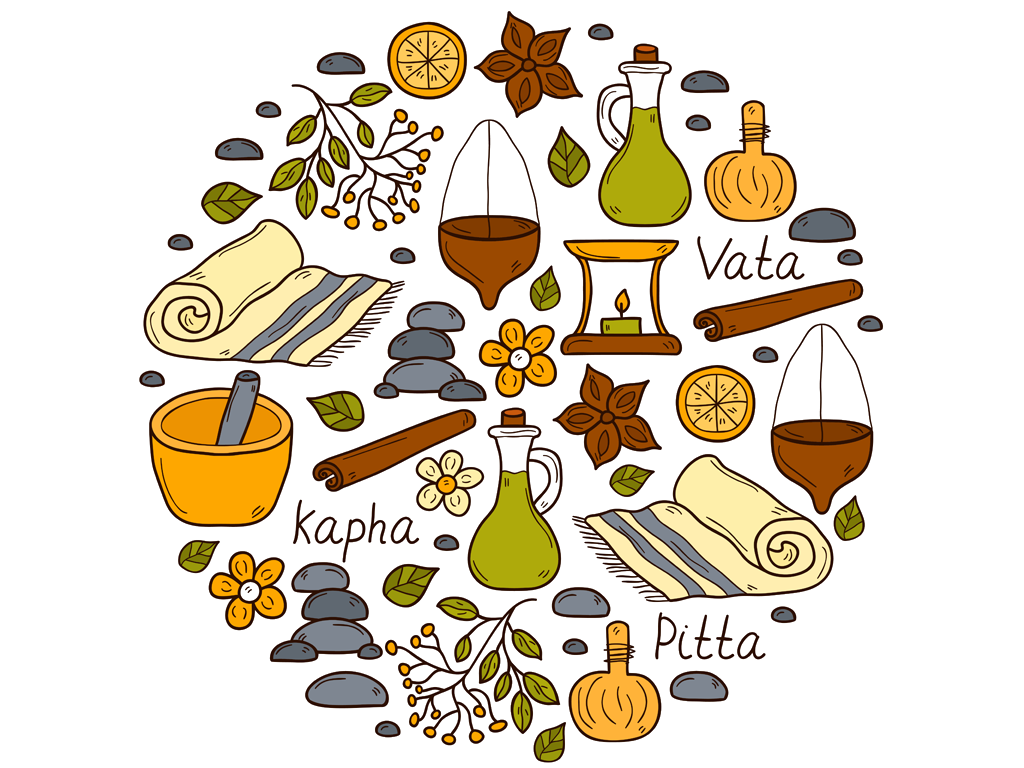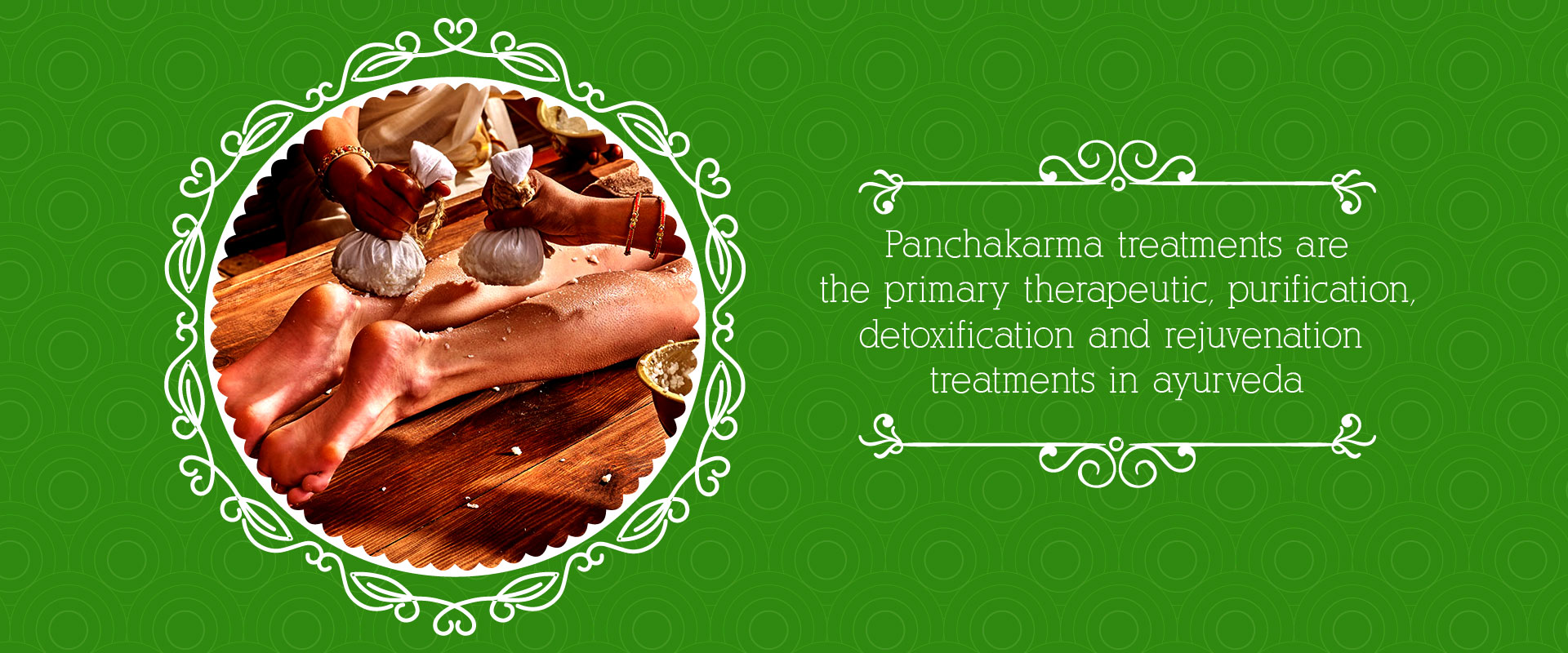श्रीविश्वाई चिकिस्तालय

VAMANA Procedure
1. Infrastructure: -
Dedicated Panchkarma Department: A separate area for Panchkarma treatments, ensuring hygiene and privacy. Treatment Rooms: Individual rooms for each Panchkarma procedure, with proper ventilation and lighting.
Ayurvedic Vamana: The Therapeutic Emesis for Detoxification
Introduction:
Ayurveda, the ancient system of medicine, offers a holistic approach to health and well-being. One of its powerful detoxification techniques is Vamana, or therapeutic emesis, which is a part of the Panchakarma treatments. Vamana is designed to cleanse the body of toxins, particularly those related to the respiratory and digestive systems, by inducing controlled vomiting.
Image: Traditional Vamana Therapy in Ayurvedic Practice
What is Vamana?
Vamana is a process in which the body is prepared and then made to expel excess Kapha dosha (one of the three doshas or body humors) from the stomach and respiratory tract. This is particularly beneficial for individuals with imbalances in the Kapha dosha, manifesting as conditions like asthma, chronic colds, obesity, and skin disorders.
The Procedure of Vamana:
The process of Vamana is meticulously planned and executed under the guidance of an experienced Ayurvedic practitioner. Here's how the process generally unfolds:
Preparation Phase:
The individual undergoes Snehana (oleation), where medicated ghee or oils are administered to lubricate the tissues and loosen toxins.
This is followed by Swedana (fomentation or sweating), which helps in mobilizing the toxins towards the gastrointestinal tract.
Administration of Emetic Medicines:
After the preparatory steps, the patient is given a special herbal concoction that induces vomiting. This is typically done in the early morning when Kapha is predominant.
The vomiting is induced under controlled conditions, and the process continues until the toxins are believed to be expelled.
Post-Procedure Care:
After the emesis, the patient is allowed to rest and is given a light diet to gradually rebuild the digestive fire (Agni).
Specific dietary and lifestyle guidelines are recommended to ensure proper recovery and to prevent the recurrence of Kapha-related disorders.
Image: Ayurvedic Herbs Commonly Used in Vamana Therapy
Benefits of Vamana:
Vamana therapy is known for its profound benefits in cleansing the body and mind:
Detoxification: It effectively removes toxins from the body, particularly those associated with Kapha dosha.
Improved Digestion: By clearing the excess mucus and waste, it enhances digestive power.
Respiratory Health:
It is highly effective in treating respiratory conditions like asthma, chronic cough, and bronchitis.
Weight Management: Vamana helps in reducing excess body fat and managing obesity.
Skin Health: It is beneficial for treating skin conditions such as psoriasis, eczema, and acne by detoxifying the blood.
Precautions and Considerations:
Vamana should always be performed by a qualified Ayurvedic practitioner as it requires careful monitoring and expertise. It is not suitable for everyone, and certain contraindications must be considered, such as age, pregnancy, and specific health conditions.
Conclusion:
Ayurvedic Vamana is a powerful detoxification process that offers numerous health benefits, particularly for those with Kapha imbalances. When administered properly, it can lead to improved respiratory health, better digestion, and overall well-being. If you're considering Vamana therapy, consult with a knowledgeable Ayurvedic doctor to determine if it's the right treatment for you.
Image: A Holistic Approach to Health with Ayurvedic Panchakarma
Author:
Your Name
Certified Ayurvedic Practitioner & Wellness Enthusiast
2. Equipment: -
Basic Equipment: Stethoscopes, blood pressure monitors, height and weight measuring scales.
Panchkarma Specific Equipment: Vamana: Buckets, mugs, and other necessary utensils. Purgation: Enema equipment, infusion sets. Basti: Enema equipment, infusion sets, herbal decoctions. Nasya: Nasal drops, containers, and headrests. Shirodhara: Shirodhara pot, oil containers, headrests. Sterilization Equipment: Autoclave, sterilizers for instruments.
General Clinic Equipment: Examination tables, patient gowns, blankets, towels, etc.
3. Medicines and Herbs:
Standard Ayurvedic Formulations: Prepare or procure standard Ayurvedic medicines for various ailments.
Panchkarma Specific Medicines: Stock necessary herbs and oils for different Panchkarma procedures. Herbal Oils: Coconut oil, sesame oil, mustard oil, and other medicated oils. Powders: Various herbal powders for Nasya and other treatments. Decoctions: Prepare herbal decoctions for Basti and other procedures.
4. Staff:
Qualified Ayurvedic Physicians: To diagnose and prescribe treatments.
Trained Panchkarma Therapists: To administer treatments.
Nursing Staff: For patient care and assistance.
Support Staff: For cleaning, sterilization, and other administrative tasks.
Organizing Ayurvedic Camps
Identify Target Audience: Determine the specific population you want to target (e.g., elderly, people with specific ailments).
Choose Location: Select a suitable location with adequate space for camps. Create Awareness: Utilize local media, social media, and community outreach to promote the camp.
Offer Basic Check-ups: Conduct basic health assessments to identify potential patients for Panchkarma. Provide Panchkarma Consultation: Offer free or discounted consultations for Panchkarma treatments.
Follow-up: Provide post-camp care instructions and encourage patients to continue treatment at the clinic.
- Remember:
Hygiene and Sanitation: Maintain strict hygiene standards throughout the clinic and during camps.
Patient Comfort: Prioritize patient comfort and satisfaction. Ethical Practices: Adhere to ethical guidelines and avoid overpromising treatments.
Continuous Learning: Stay updated on the latest advancements in Ayurveda and Panchkarma. By following these guidelines, you can establish a successful Ayurvedic clinic focused on Panchkarma and organize effective camps to reach a wider audience
Vishwai: Could possibly be derived from "Vishwa," meaning "universe" or "world".
A potential interpretation could be: "Auspicious Ayurvedic Clinic for the World" or "Prosperous Ayurvedic Care for All".
- Hygienic Infrastructure
- Qualified Therapist
- Doctor Consultation
- 100 % Natural
Our Special Treatments
Ayurvedic Remedies & Services Offered Since 2004
Shrivishwai Ayurved Clinic was started with the aim of Providing Holistic Ayurveda Treatments in Chikhli ,Buldhana District, Natural and Effective Treatment.
The Clinic is Committed in Taking Guidance of all the Advanced Diagnostic methods of Allopathy and Effective Natural Treatment Procedures of Ayurveda.

Ayurvedic Consultation

Ayurvedic Therapies

Out Patient Treatments
Welcome to Shrivishwai Ayurved Clinic
We offer ayurvedic treatments for almost every Ailment. We also have good facilities for Panchakarma Therapies.
The clinic was Established in 2004 by Dr. Deepak Khedekar. Shrivishwai Ayurved Clinic is placed in Chikhli, a suburban of Buldhana District, India.
The name of the clinic itself suggests its objective of offering optimum health to every patient.
Based on the information provided, it seems that "Shrivishwai Ayurved" is likely a proprietary name chosen for the clinic.
The core focus of the clinic is clearly Ayurveda, as indicated by the name itself.
The term "Shrivishwai" might be a unique identifier or a combination of words chosen to reflect the clinic's philosophy or values.
Potential Meanings (Speculative) Without more context, it's difficult to pinpoint the exact meaning. However, based on common Sanskrit word structures, we can speculate:
Shri: Often translates to "auspicious" or "prosperous".
Vishwai: Could possibly be derived from "Vishwa," meaning "universe" or "world".
A potential interpretation could be: "Auspicious Ayurvedic Clinic for the World" or "Prosperous Ayurvedic Care for All".
Again, this is purely speculative and without concrete evidence.
Focus on Ayurveda
The most crucial aspect is that the clinic's primary service is Ayurveda. This is clearly established in the name.
Would you like to explore potential marketing slogans or taglines based on the name "Shrivishwai Ayurved"?
The Sanskrit word Ayurved means "the complete absence or removal of disease" We achieve our moto with the help of time tested authentic .
ayurvedic herbomineral medicines along with precise panchakarma therapies, diet and lifestyle modification advice and yogic exercises.
This holistic approach is what makes Shrivishwai Ayurved clinic stand out from others.A five thousand year old system of healing with origins in the Vedic culture of ancient India.
The Sanskrit word Ayurveda is derived from the root words ayuh, meaning “life” or “longevity,” and veda, meaning “science” or “sacred knowledge.” Ayurveda therefore translates as, "the sacred knowledge of life.”
Our treatments are personalized to every individual considering their physical and mental constitutions diet, stress levels and work schedules.
Our doctor spends enough time for all patients to probe into patient's long lasting inner problems.
3 Doshas of Ayurvedic Medicine

Vata -
Vata energy is often said to be like the wind. It is primarily in charge of mobility, motion, circulation, breathing and other essential body functions.
Vata - Type of personalities are known to be creative and energetic when they are in balance but fearful, stress out and “scatter-brained” when they are not. Physically, vata types are usually on the thin side, have smaller bones and tend not to put on weight easily.
Pitta -
Pitta is the energy force that governs most metabolic activity including digestion, absorption of nutrients, body temperature and energy expenditure.
Pitta type of personalities tend to be smart, hard-working and driven (even competitive) when in balance but can be overly angry and aggressive when they are not.
Kapha -
Kapha controls growth in the body and is considered the nourishing dosha. It supplies moisturize to the cells and organs and helps keep a strong immune system.
Kaphatypes of personalities are known for being grounded, supportive, loving and forgiving when in balance - almost like a maternal figure.
1000+ Happy Patients Believe Patients
Visit ShriVishwai Ayurvedic Clinic Following Google Map Location
© 2024 - 2025 | Shrivishwai Ayurved Clinic Chikhli |
All Rights Reserved.
Designed & Developed by VIOTX SOFTINFOTECH PVT LTD
© 2024 - 2025 | Shrivishwai Ayurved Clinic Chikhli |
All Rights Reserved.
Designed & Developed by VIOTX SOFTINFOTECH PVT LTD
श्रीविश्वाई चिकिस्तालय Terms and Conditions
Shrivishwai Ayurved Clinic Terms and Conditions
Introduction
At Shrivishwai Ayurved CLinic , we offer the most genuine and effective panchakarma therapies including vamana Vamana is a medicated emesis therapy which removes Kapha toxins collected in the body and the respiratory tract.
This is given to people with high Kapha imbalance.
The procedure takes around 8 to 10 days.
Indications: For Bronchial Asthma, Chronic Allergies, Vitiligo, Psoriasis, Hyperacidity, Chronic Indigestion, Nasal Congestion, Edema, Obesity, Psychological disorders, Skin disorders.
Ayurvedic Vamana: The Therapeutic Emesis for Detoxification
Introduction:
Ayurveda, the ancient system of medicine, offers a holistic approach to health and well-being.
One of its powerful detoxification techniques is Vamana, or therapeutic emesis, which is a part of the Panchakarma treatments.
Vamana is designed to cleanse the body of toxins, particularly those related to the respiratory and digestive systems, by inducing controlled vomiting.
Image: Traditional Vamana Therapy in Ayurvedic Practice
What is Vamana?
Vamana is a process in which the body is prepared and then made to expel excess Kapha dosha (one of the three doshas or body humors) from the stomach and respiratory tract.
This is particularly beneficial for individuals with imbalances in the Kapha dosha, manifesting as conditions like asthma, chronic colds, obesity, and skin disorders.
The Procedure of Vamana:
The process of Vamana is meticulously planned and executed under the guidance of an experienced Ayurvedic practitioner. Here's how the process generally unfolds:
Preparation Phase:
The individual undergoes Snehana (oleation), where medicated ghee or oils are administered to lubricate the tissues and loosen toxins.
This is followed by Swedana (fomentation or sweating), which helps in mobilizing the toxins towards the gastrointestinal tract.
Administration of Emetic Medicines:
After the preparatory steps, the patient is given a special herbal concoction that induces vomiting. This is typically done in the early morning when Kapha is predominant.
The vomiting is induced under controlled conditions, and the process continues until the toxins are believed to be expelled.
Post-Procedure Care:
After the emesis, the patient is allowed to rest and is given a light diet to gradually rebuild the digestive fire (Agni).
Specific dietary and lifestyle guidelines are recommended to ensure proper recovery and to prevent the recurrence of Kapha-related disorders.
Image: Ayurvedic Herbs Commonly Used in Vamana Therapy
Benefits of Vamana:
Vamana therapy is known for its profound benefits in cleansing the body and mind:
Detoxification: It effectively removes toxins from the body, particularly those associated with Kapha dosha.
Improved Digestion: By clearing the excess mucus and waste, it enhances digestive power.
Respiratory Health: It is highly effective in treating respiratory conditions like asthma, chronic cough, and bronchitis.
Weight Management: Vamana helps in reducing excess body fat and managing obesity.
Skin Health: It is beneficial for treating skin conditions such as psoriasis, eczema, and acne by detoxifying the blood.
Precautions and Considerations:
Vamana should always be performed by a qualified Ayurvedic practitioner as it requires careful monitoring and expertise. It is not suitable for everyone, and certain contraindications must be considered, such as age, pregnancy, and specific health conditions.
Conclusion:
Ayurvedic Vamana is a powerful detoxification process that offers numerous health benefits, particularly for those with Kapha imbalances. When administered properly, it can lead to improved respiratory health, better digestion, and overall well-being. If you're considering Vamana therapy, consult with a knowledgeable Ayurvedic doctor to determine if it's the right treatment for you.
Image: A Holistic Approach to Health with Ayurvedic Panchakarma
Author:
Your Name
Certified Ayurvedic Practitioner & Wellness Enthusiast
Privacy Policy
- Hygienic Infrastructure
- Qualified Therapist
- Doctor Consultation
- 100 % Natural







